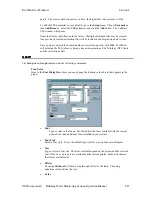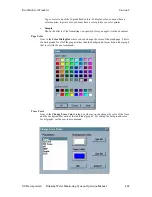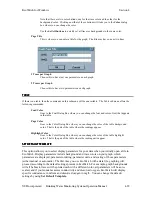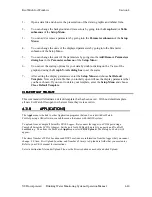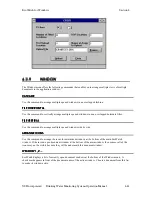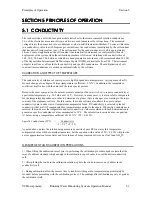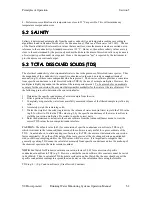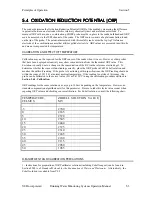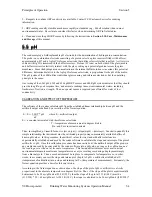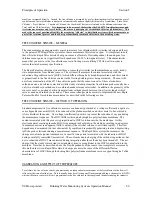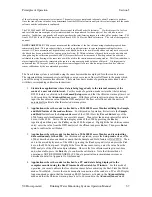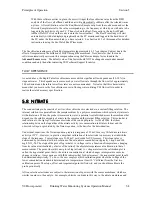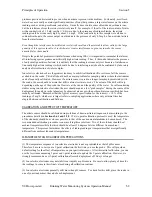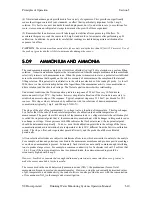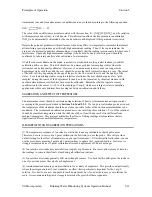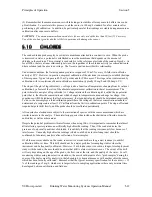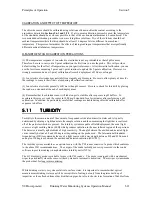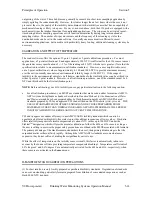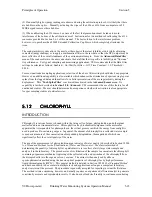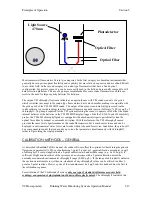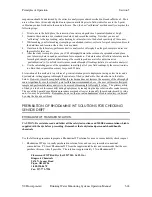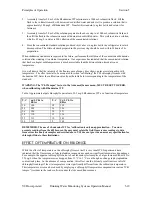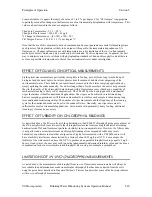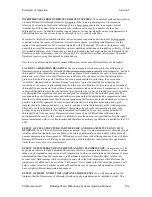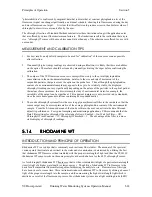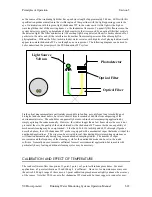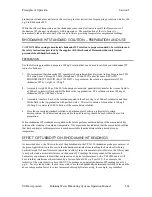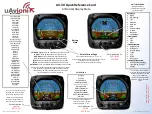
Principles of Operation
Section 5
YSI Incorporated Drinking Water Monitoring Systems Operation Manual
5-9
produces positive nitrate readings even when no nitrate is present in the medium. Fortunately, most fresh
water does not usually contain significant quantities of ions that produce a large interference on the nitrate
reading, such as azide, perchlorate, and nitrite. It usually does contain some chloride and carbonate ions,
but the interference from these ions is relatively small. For example, if the all of the ionic content of water
with a conductivity of 1.2 mS/cm (Sal = 0.6) were due to the presence of sodium chloride, the nitrate
reading would be erroneously high by about 1.6 mg/L. If the conductivity in this sample were all due to
sodium bicarbonate, the sensor output would indicate the presence of only 0.2 mg/L of non-existent nitrate
from the interference.
Even though the interference from chloride is relatively small and thus tolerable at low salinity, the large
quantity of this species in salt or brackish water creates interference so great as to make the sensor
unsuitable for these media.
Despite the potential problems with interference when using ISEs, it is important to remember that almost
all-interfering species produce an artificially high nitrate reading. Thus, if the sonde indicates the presence
of only small quantities of nitrate, it is unlikely that the reading is erroneously low because of interference.
Unusually high nitrate readings (which could be due to interfering ions) should be confirmed by laboratory
analysis after collection of water samples.
Ion selective electrodes have the greatest tendency to exhibit calibration drift over time of all the sensors
available on the sonde. This drift should not be a major problem for sampling studies where the instrument
can be frequently calibrated. However, if a nitrate sensor is used in a longer-term deployment study with
the sonde, the user should be aware that drift is almost certain to occur. The extent of the drift will vary
depending on the age of the probe, the flow rate at the site, and the quality of the water. For all monitoring
studies using ion selective electrodes, the user should acquire a few “grab samples” during the course of the
deployment for analysis in the laboratory by chemical means or with another nitrate sensor which has been
recently calibrated. Remember that the typical accuracy specification for the sensor (+/- 10 % of the
reading or 2 mg/L, whichever is larger) refers to sampling applications where only minimal time has
elapsed between calibration and field use.
CALIBRATION AND EFFECT OF TEMPERATURE
The nitrate sensor should be calibrated using solutions of known nitrate-nitrogen content according to the
procedures detailed in
Sections 2.6.1 and 2.9.2
. If a two point calibration protocol is used, the temperature
of the standards should be as close as possible to that of the environmental medium to be monitored. The
recommended calibration procedure is one involving three solutions. Two of the solutions should be at
ambient temperature while the third should be at least 10 degrees Celsius different from ambient
temperature. This protocol minimizes the effects of taking readings at temperatures that are significantly
different from ambient laboratory temperatures.
MEASUREMENT AND CALIBRATION PRECAUTIONS
(1) The temperature response of ion selective electrodes is not as predictable as that of pH sensors.
Therefore, be sure to carry out a 3-point calibration the first time you use the probe. This will provide a
default setting for the effect of temperature on your particular sensor. After this initial calibration, you can
use the less time-consuming 2 point and 1-point routines to update the 3-point calibration. However, we
strongly recommend a new 3-point calibration after each deployment of 30 days or longer.
(2) Ion selective electrodes may not stabilize as rapidly as pH sensors. Be sure to allow plenty of time for
the readings to come to their final values during all calibration routines.
(3) Ion selective electrodes generally drift more than pH sensors. To check for this drift, place the sonde in
one of your standards at the end of each deployment.

